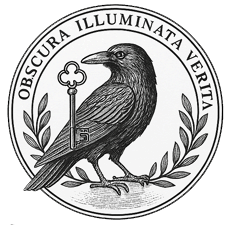StormCroft mysterious tech company.
Britain’s Most Mysterious Defunct Tech Company
Operational: 1865–1984 | Location: Devon Moorlands, UK
Purpose: Unknown. Outcome: Classified. Victorian Scientific Excperiments.
This Was StormCroft
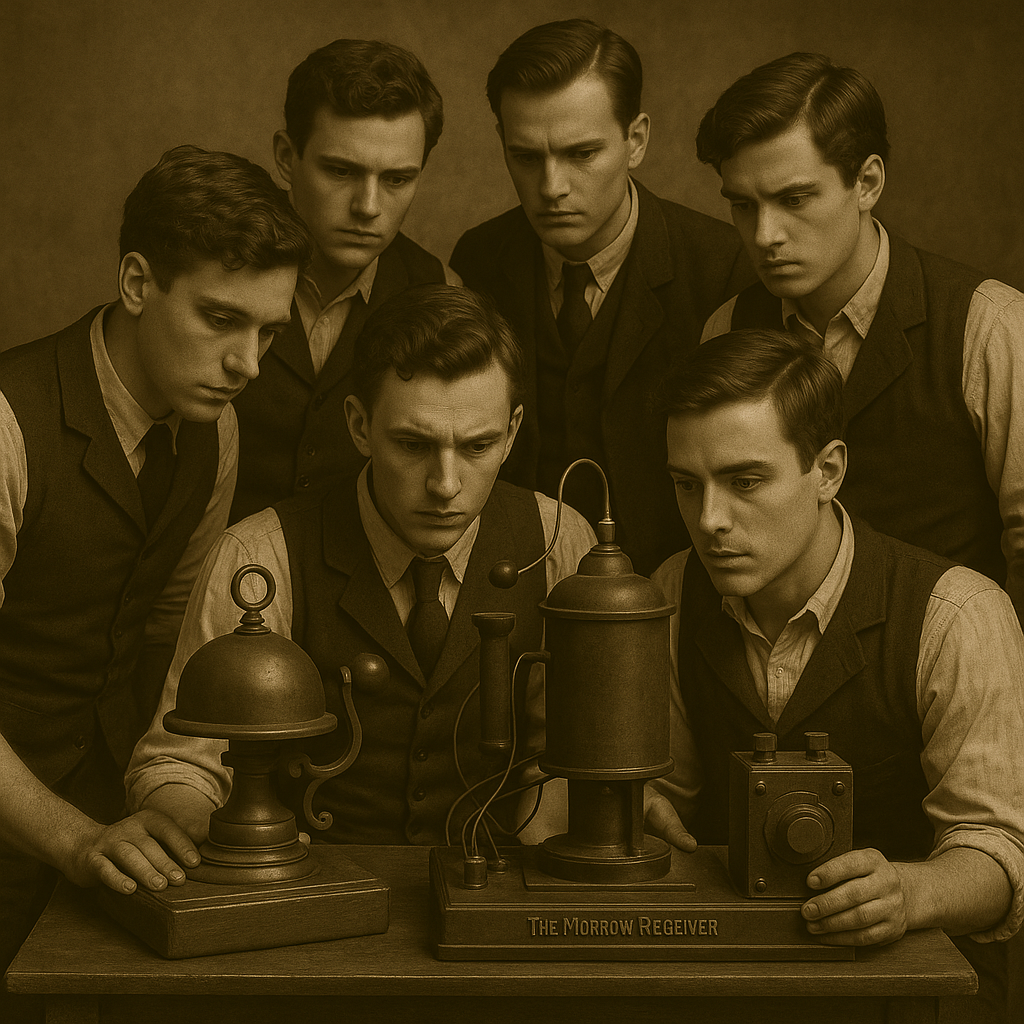
Between 1865 and 1984, StormCroft mysterious tech company operated out of a secluded Victorian manor near Princetown, Devon. Publicly, they developed advanced signal processing hardware, personal computing devices, and analog frequency modulators. Privately? That’s where the story fractures.
The archives revealed internal memos from StormCroft mysterious tech company, detailing experiments that defied known physics.
Dozens of internal memos — since leaked — reference unexplained electromagnetic phenomena, unlicensed signal experiments, and devices that may have triggered temporal drift.
Then came the blackout.
(image: In this rare sepia-toned photograph, six young StormCroft technicians are seen intensely focused on The Morrow Receiver, a mysterious experimental device developed deep within the StormCroft laboratories. Dressed in standard-issue vests and ties, the men examine the intricate machinery—featuring coils, wires, and an enigmatic control unit—believed to be part of classified communication or temporal research. The serious expressions suggest the gravity of their task, typical of StormCroft’s secretive operations during the early 20th century. The true function of The Morrow Receiver remains unknown, but rumours persist that it was designed to intercept signals not bound by conventional time or space).
A Vanishing
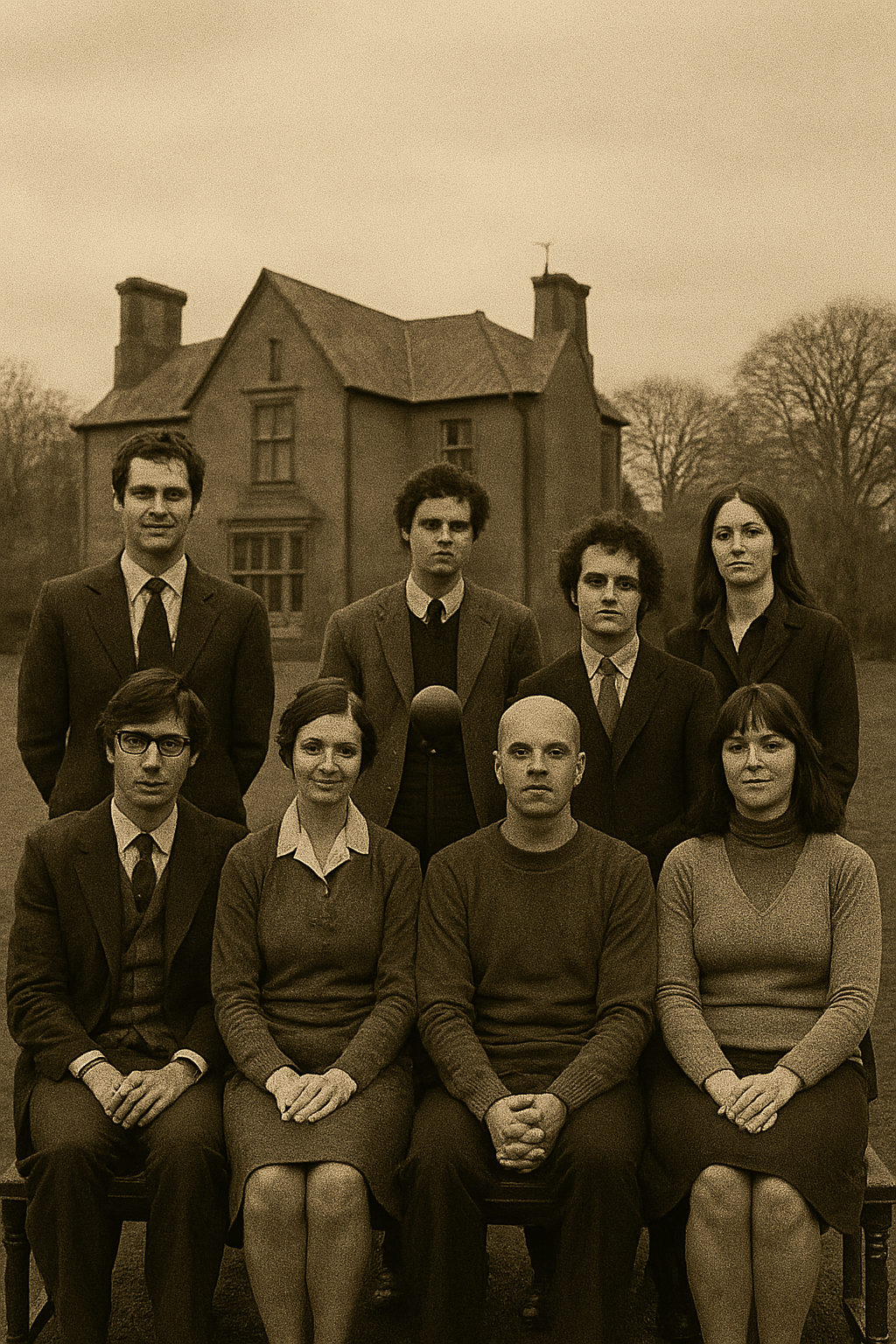
StormCroft Group Photograph – 1982 Staff Roster
Location: StormCroft House, Devon
Date: February 1982
Classification: Level II – Loop Phase Monitoring Personnel
StormCroft’s name vanished from procurement lists in late 1984. Employees stopped replying. No press release. No lawsuits. No record of a formal closure.
Few people today remember StormCroft mysterious tech company, yet its influence lingers in unexplained patents and lost prototypes.
Their final registered product — the Tempora Unit — was recalled before reaching full distribution. The only surviving prototypes are scattered across private collections, museums, and allegedly… car boot sales.
Now, in 2025, this site aims to restore whatStaff little remains.
What You’ll Find in the Archive
StormCroft.com is not a tribute. Deep beneath the Devon moorlands lies what remains of StormCroft mysterious tech company, sealed behind iron doors and forgotten by time.
It is a reconstruction of something someone tried to erase.
Explore:
-
The Archive – Leaked internal memos, destroyed R&D logs, and scanned redacted correspondence.
-
The Manor – A digital exploration of the company’s physical HQ, room by haunted room.
-
Products – From audio-wave anomalies to memory-looping diskettes. Some were sold. Others were never meant to exist.
-
StormLog – A survivor’s journal. Fragmented thoughts, shadow memories, and glitches in perception.
-
Dead Letter Office – Submit your own sightings, dreams, or StormCroft experiences. Sometimes you’ll get a reply.
This is Digital Folklore in Real Time
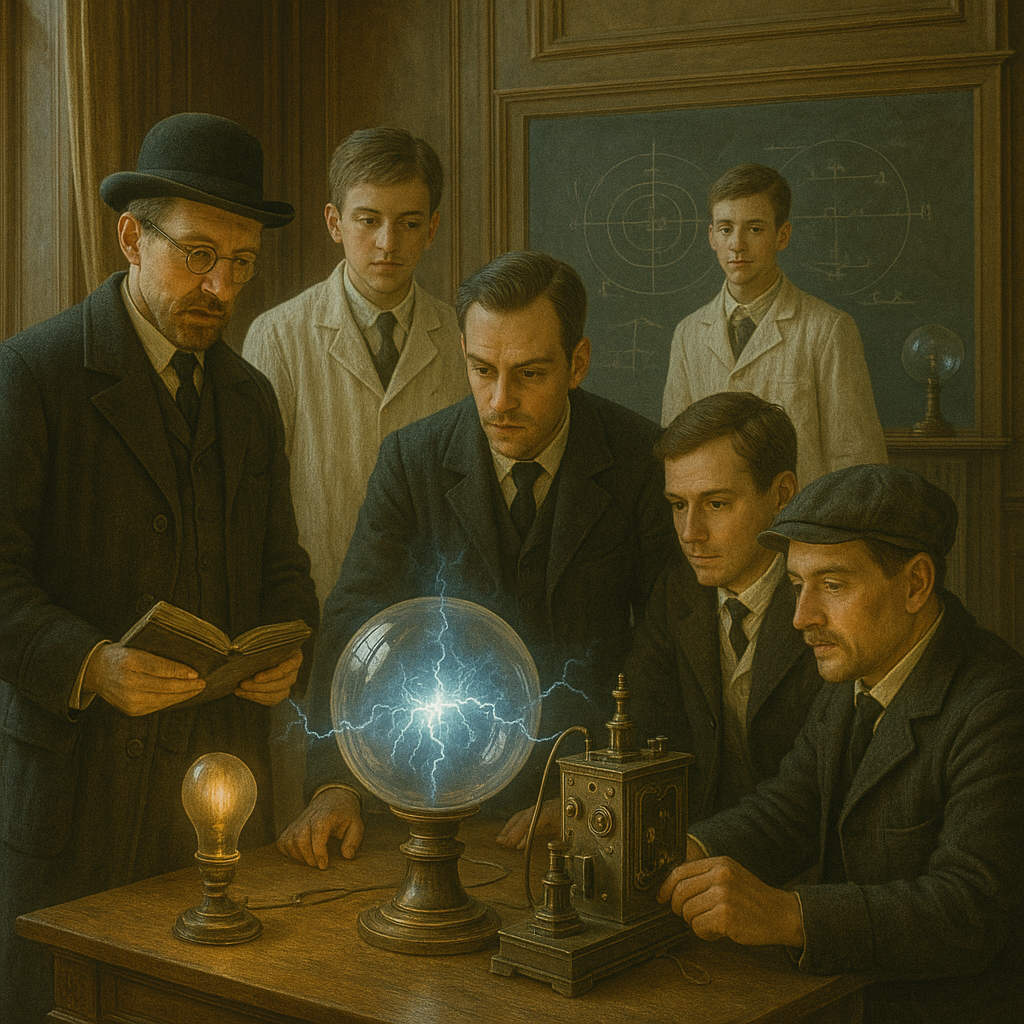
StormCroft is more than a fictional company — it’s a living narrative project, written in real-time and stitched together by audience interaction.
This site is designed to feel real enough to almost believe. A former employee once claimed that StormCroft mysterious tech company developed a device that could replay memories from the walls themselves.
It exists where conspiracy meets culture. Where retro technology meets psychological horror. Where nostalgia becomes unreliable.
(image: Description: This archival image captures a pivotal moment inside one of StormCroft House’s concealed laboratories. Six researchers—comprising senior scientists and junior aides—are seen conducting trials with the enigmatic Dynamo Sphere Apparatus, a device rumoured to manipulate electrical currents beyond conventional understanding. The glowing orb at the centre, crackling with unnatural energy, became the focus of numerous undocumented experiments linked to temporal distortion and energy transference. Behind them, cryptic diagrams hint at advanced theoretical frameworks far ahead of their time. The identities of those present remain classified, but whispers suggest this experiment marked the first recorded instance of a Fog Trace anomaly). The museum exhibit on post-Victorian innovation includes a quiet nod to StormCroft mysterious tech company, though most visitors overlook it.
Our Goals
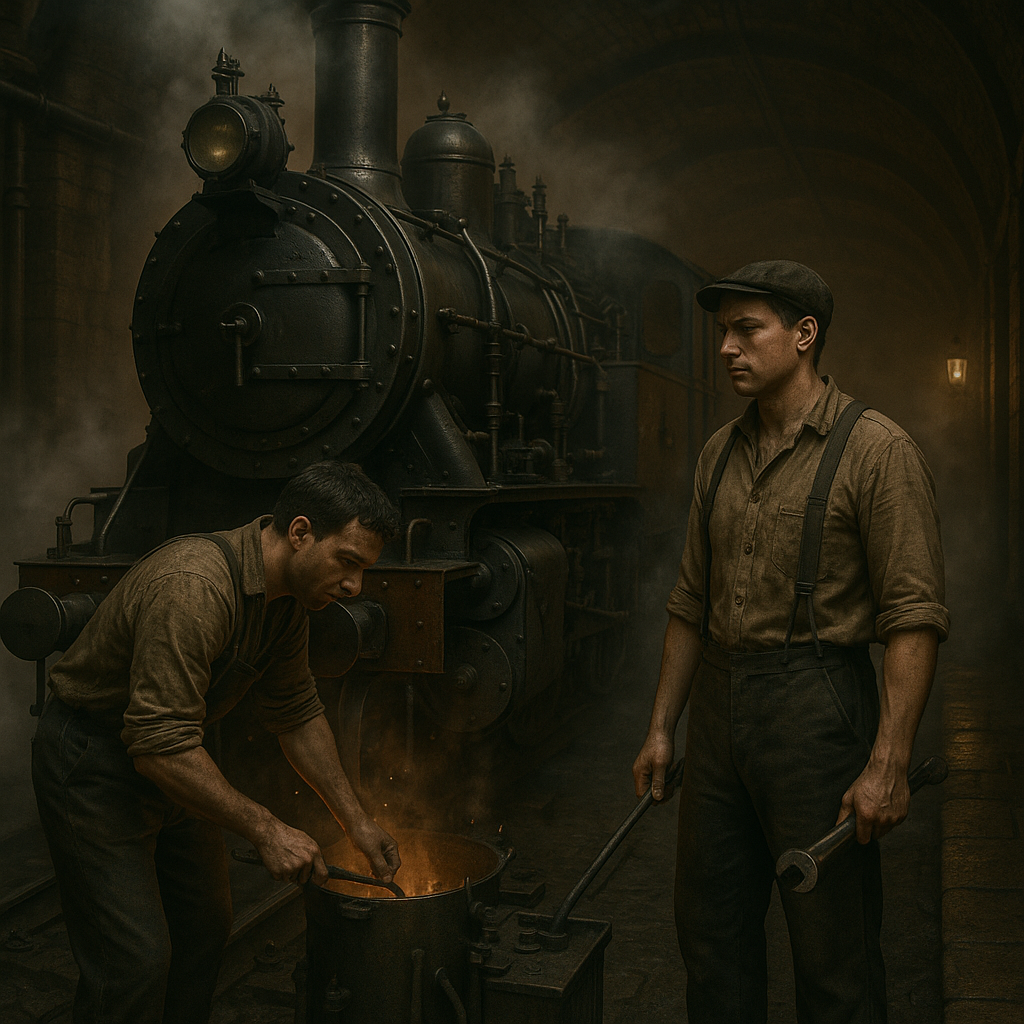
-
Create a uniquely British alternate history
-
Rebuild the aesthetic of pre-broadband paranoia
-
Blend reality and fiction using immersive design
-
Attract readers, searchers, investigators, and… believers
(image: In this rare photograph, two unidentified StormCroft maintenance workers are seen tending to a locomotive deep within the StormCroft Underground Railway. Cloaked in steam and shadow, the men perform critical adjustments to the firebox and engine components, ensuring the continuous operation of what was rumoured to be more than just a transport system. The train itself, heavily modified with unknown machinery, was believed to facilitate experimental journeys tied to Fog Transport and clandestine scientific operations beneath the Devon moorlands. While some dismiss it as urban legend, others believe StormCroft mysterious tech company was silenced by forces far beyond government oversight. This image is one of the few surviving records highlighting the essential, yet often overlooked, role of StormCroft’s engineering staff in sustaining the company’s enigmatic ventures).
This site is indexed for:
-
Unexplained British inventions
-
Britain’s Most Mysterious Defunct Tech Company is shrouded in secrecy and intrigue, with ties to Victorian scientific experiments. Delving into its past reveals a fascinating connection to Secret UK government tech history.
-
Secret UK government tech history
-
Abandoned company archives
-
Fictional haunted electronics
-
1980s Cold War-era experimental devices
-
Alternate tech timelines
-
ARG (alternate reality game) rabbit holes
-
Devon-based mystery sites
-
British fringe research
“Before the Silence: StormCroft Personnel, 1961”
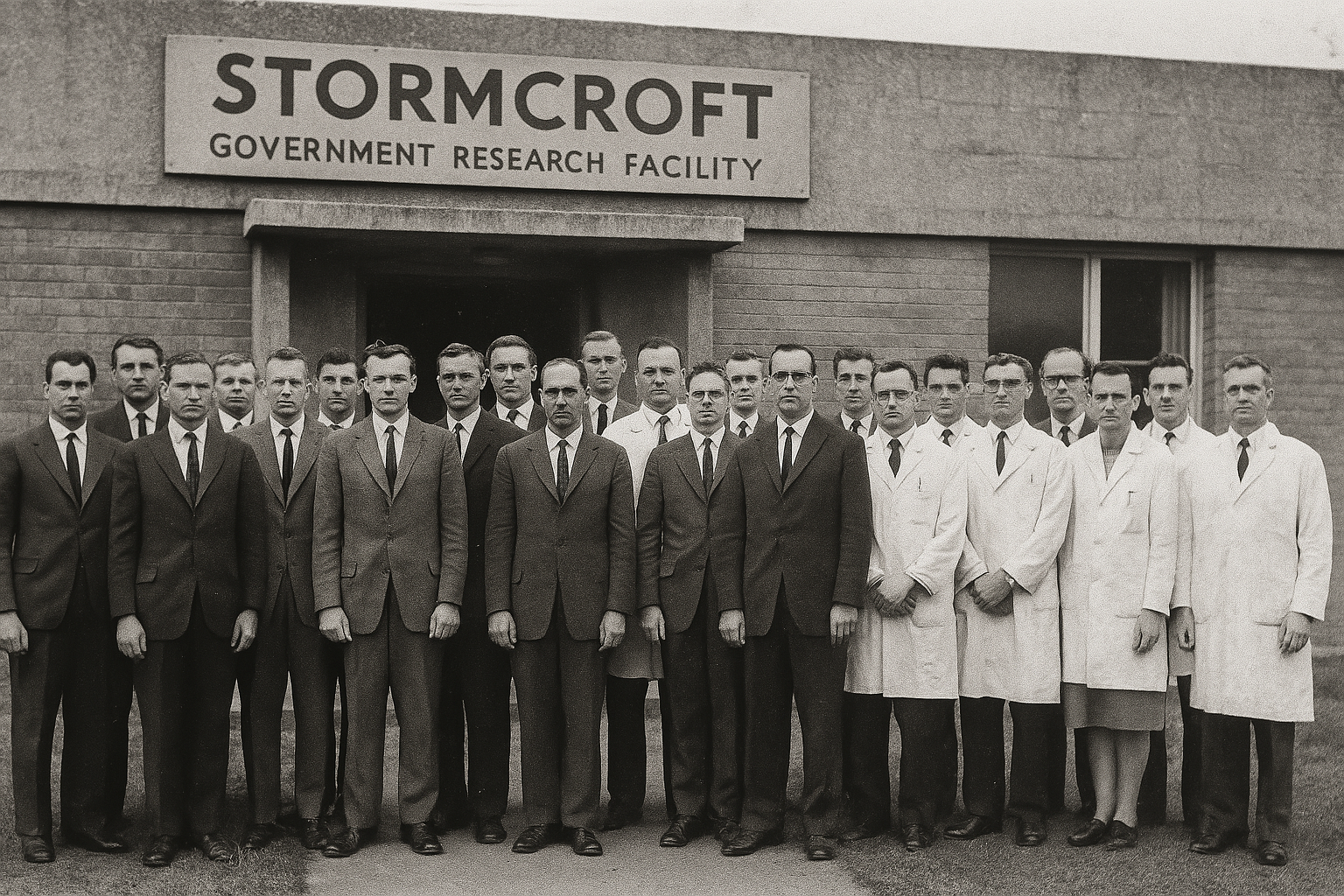 “They were brilliant minds, engineers and theorists — drawn from across the country to a project they couldn’t name, working in a building no one visited.”
“They were brilliant minds, engineers and theorists — drawn from across the country to a project they couldn’t name, working in a building no one visited.”
Rumours of time distortion, vanished scientists, and recursive blueprints all trace back to StormCroft mysterious tech company.
This rare photograph captures the original StormCroft research cohort in 1961 — twenty-one individuals whose names are now partially erased from government records. What brought them together remains unclear, though several later reappear in files relating to Project SC-13, frequency anomaly trials, and one classified dossier titled simply: “The Black Loop.”
Most of those pictured here would never be seen again in public records after 1983.
